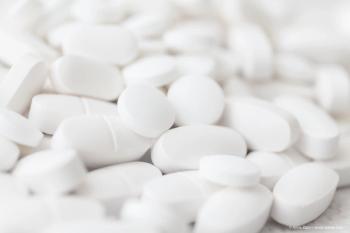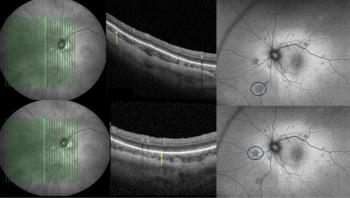
ASRS 2024: Intraoperative fluorescein angiography reduces the rate of postoperative vitreous hemorrhage
Alan Franklin, MD, PhD, FASRS, a retina specialist in Mobile, Alabama spoke about his presentation, "Intraoperative Fluorescein Angiography Reduces the Rate of Postoperative Vitreous Hemorrhage."
The Eye Care Network is on-site at this year's American Society of Retina Specialists (ASRS) meeting in Stockholm, Sweden. Alan Franklin, MD, PhD, FASRS, a retina specialist in Mobile, Alabama spoke about his presentation, "Intraoperative Fluorescein Angiography Reduces the Rate of Postoperative Vitreous Hemorrhage."
Editor's note: The below transcript has been lightly edited for clarity
Alan Franklin, MD, PhD, FASRS: Hi I'm Alan Franklin, MD, PhD. FASRS, I practice at Diagnostic and Medical Clinic in Mobile, Alabama, [and I] had the opportunity to present intraoperative fluorescein angiography, how that's improving our outcomes in diabetic vitrectomy at this great venue in Stockholm, Sweden. intraoperative fluorescein angiography, was initially described by Steve Charles 20to 30 years ago, with the advent of digital visualization, it's gotten more traction as our visualization is better. The images and the video on the operating room are quite compelling, but the question begs is even though the video is great, and shows us reproducible biomarkers that we see in clinic, will it help her outcomes.
So we did a study where we looked at our diabetic patients and looked at rate of vitreous hemorrhage after vitrectomy with or without fluorescein angiography guidance intraoperativly of laser and other surgical maneuvers. Indeed, we found that fluorescein angiography reduced our post-op vitreous hemorrhage rate greatly, especially over the first 1 to 2 months with corresponding better vision reported rate with fluorescein guidance during the surgery is on the order of 10%, which is much lower than the standard reported rates after vitrectomy surgery for diabetic retinopathy and we both Dr. Abruro, our colleague and Dominican Republic, and we showed a significant reduction and rates of vitreous hemorrhage after surgery compared to those who did not receive intraoperative fluorescein angiography before surgery, it was highly significant, especially at both the 1- and the 2-month time points And that we had about 90 patients that underwent fluorescein angiography, so it's still a relatively large study. It is limited by the retrospective nature.
Hopefully it'll improve adoption. It's one thing to show pretty pictures and videos, but to show and prove surgical outcomes, hopefully will will get better adoption. We need to work on making this available for both digital visualization platforms and standard optical visualization with a surgical microscope as well.
Newsletter
Get the essential updates shaping the future of pharma manufacturing and compliance—subscribe today to Pharmaceutical Technology and never miss a breakthrough.













































